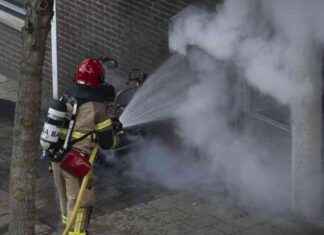“A great writer, as it is the case that occupies to us, it is never enough to read, nor known. But Spain is a country whose writers often rhapsodize with slopes of other latitudes, because it might seem a little modern to recognize the value of the culture of his own country, of its language”. This complaint of the professor of Spanish Literature at the Autonomous University of Barcelona Fernando Valls refers to Ignacio Aldecoa (Vitoria, 1925 – Madrid, 1969), one of the great benchmarks of the Generation of ‘ 50, master of the realistic account that embodied in novels, but, above all, in a few short texts that are always preferred to call stories.
Valls, asked now that Alfaguara has reissued their Complete Stories, holds his reproach —although “part of the best of our literary tradition, it does not appear that the young narrators spaniards have called too much attention”— for example, in the survey that accompanied the anthology of the story current of Andrés Neuman, published in 2010; in it, only mentioned Aldecoa three of 42 authors consulted. Support the specialist, however, “notable exceptions” of all ages, authors that have shown their appreciation by Aldecoa, among others: José María Merino (La Coruña, 1941), Luis Mateo Díez (Villablino, Leon, 1942), Manuel Longares (Madrid, 1943), Julia Otxoa (San Sebastián, 1953), Fernando Aramburu (San Sebastián, 1959), Iban Zaldua (San Sebastian, 1966), and Elvira Navarro (Huelva, 1978).
MORE INFORMATION
Ignacio Aldecoa, avid of life 60 minutes in the paradise of Aldecoa
In fact, its footprint can still rastreándose until the ultimísimos authors: “Ignacio Aldecoa is, for me, one of the voices most personal of the years 50 and almost without a doubt the most courageous,” adds Enrique Llamas (Zamora, 1989), which this year published his first novel: Cain (DNA). “Aldecoa is a master in the narrative because it teaches us how the plot can be absolutely dispensable. Daily life and mere observation are threads that keep as gold cloth, the secret of literature, which is not another thing to give more value to what is silent, what is account. Unfortunately, it is not taken as aware as other peers of his generation for his appearance, cryptic, and certainly by his early death,” he adds.
however, other authors such as Mercedes Cebrián (Madrid, 1971), a leading figure of the genre of the story in the last few years, you acknowledge that you have read. Sara Mesa (Madrid, 1976) explains that what he read in his day, next to Ayala, Matute, Fernández Santos or Max Aub, “in those editions of the south that had been in many homes” and that he keeps “good memories, but also fuzzy”. “If influenced in any way in my books, I cannot tell; I think not, but in general I am not Celtabet able to see what are the authors that influence me more directly,” he concludes.
What is certain is that it has always been there, although probably without reaching the category of an inevitable point of reference that many believe it deserves. The professor of the Department of Spanish Literature at Saint Louis University Angeles Encinar —in 2011 he published together with professor of the Autónoma of Madrid Carmen Valcárcel the collective work Ignacio Aldecoa: master of the story— insists on the deep imprint of the author. “And yes, I can see the imprint of the writer-basque-some narrators opt for an approach to deformed, esperpéntico, with great irony and sarcasm, like the one that dominated in the book of 1965, The birds of Baden-Baden. But, in addition, Aldecoa was a great innovator. In the TWENTY-first century, that both are speaking of the short story, we must mention the Neutral Corner,, 1962, a book that combines text and images (the photographer Ramón Masats) where predominates the fragmentation and suggestion, and that is a great example of hybridity generic”.
“Ignacio Aldecoa believed in the story when hardly anyone trusted the genus in our country, and tried to give it in a prose more elaborate, much more careful of driving in the work narratives of those years, providing us with a critical vision of the reality is much more subtle than that employed by the so-called novelists of social realism, and by all it has endured for more”, adds the professor Valls before mentioning its main referents: “The americans call the lost generation, the Italian storytellers of the post-war period, Pavese to the head, and the neorealist cinema”.
But, for tracking its mark on short story writers today would have “to attend to something more than the style and the modes, because the victorian was quite a bit more than a ‘neo-realist’ in that Spain grey of the half-century”, writes the writer Sergi Bellver (Barcelona, 1971), that is, in any event, its trace in Óscar Esquivias, and Pablo Andrés Escapa. “Aldecoa was also, for example, a traveller open to the world and fascinated by the sea, New York or the Canary Islands, a landscape of the mythical, taking his Notebook from Godo. Do not make a better heir to a writer of another the fact of sharing a certain vision of the world? Luckily, it is a pleasure to return to your literature because, like all greats, supports new readings through time, and, with his vitalism and his sensitivity, Aldecoa we still talking about the universal in the particular,” said Bellver.







